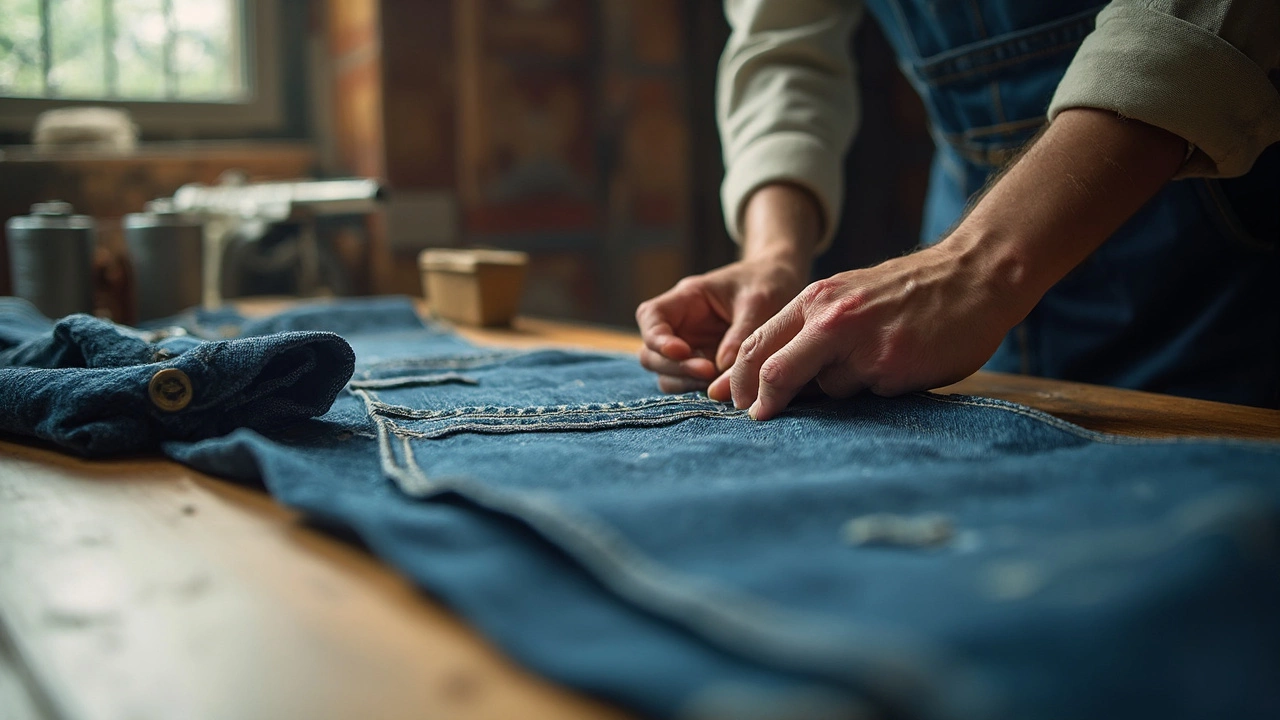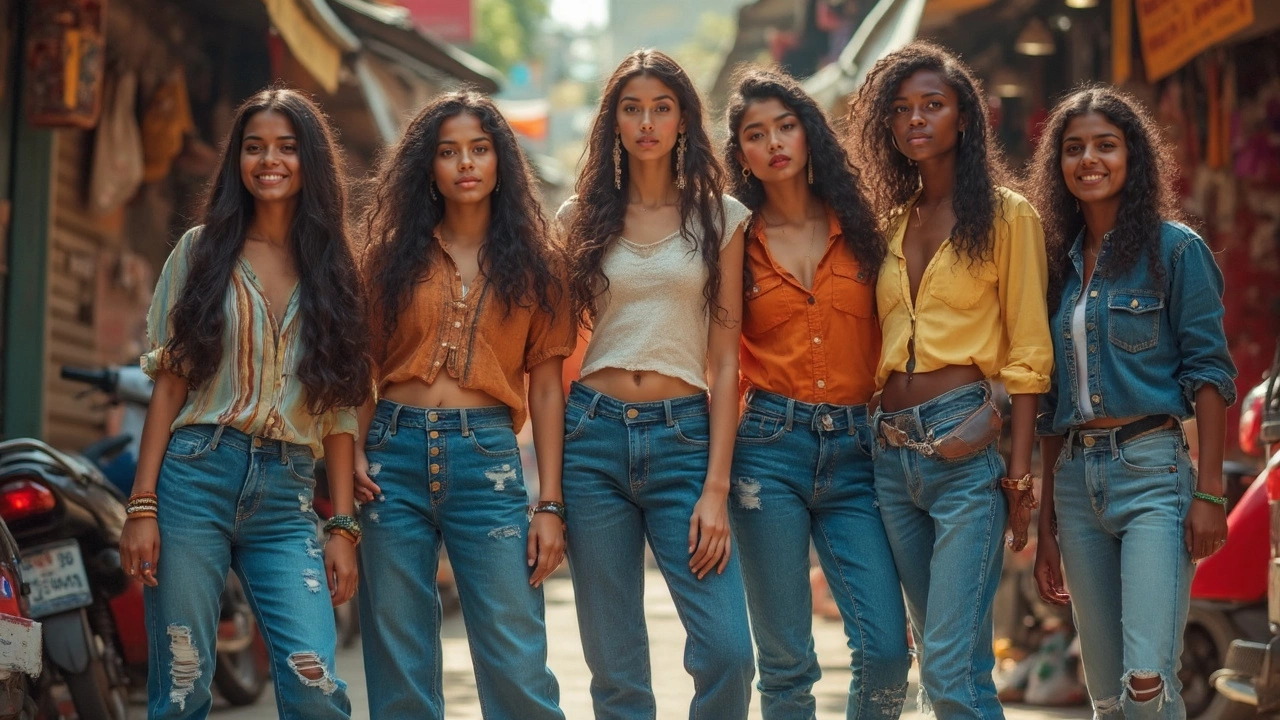The denim game is ruthless. Every year, you see supposed 'revolutions' in styles, influencers crying on TikTok about flare comebacks, skinny jeans being declared both dead and immortal, and yet... there’s always one brand that refuses to budge from the throne—year after year, generation after generation. Levi’s. But hey, the story's a lot more complicated (and entertaining) than just one name floating at the top. You want to know why the world keeps circling back to this brand while others fade away like last season’s skinny black jeans?
Here’s the twist: it’s not just about nostalgia, rugged American muscle ads, or the classic red tab stitched on the back pocket. Ask shoppers in Tokyo or Stockholm or right here in Auckland, and you’ll get new answers—logo fads, vintage icons, eco trends, and a truckload of clever marketing. The real reasons why Levi’s is still the No 1 brand jeans maker in the world might just surprise you.
Why Levi’s Still Reigns: Behind the Global Crown
Let’s start with a stat: according to a 2024-2025 Euromonitor report, Levi Strauss & Co. still controls over 5% of the global jeans market. Five percent sounds low... until you remember just how many brands and labels exist around the world. That’s billions in sales and millions of pairs sold, from classic 501s to the latest sustainable collections. Their nearest competitors—names like Wrangler, Diesel, and Lee—don’t really come close to this scale, especially when you add up the numbers worldwide.
So what makes Levi’s tick, when so many other denim giants struggle? Heritage plays a massive part. The company’s roots stretch all the way back to 1873; miners in California were rocking rugged indigo trousers long before denim was cool. This matters, because fashion is as much about story as it is about looks. Wearing Levi’s means you’re tapping into 150 years of workwear legend, whether you’re in high school or heading to a summer festival in your retro high-rise cut-offs.
But the real trick is reinvention. Levi’s was one of the first brands to see the potential in thrift and second-hand style. Instead of fighting vintage, they started their own line of vintage reproductions, like the 501 Original Fit, and cashed in on retro vibes before TikTok was even a thing. And when sustainability went mainstream, Levi’s pivoted fast—they now recycle water in their production process, use organic cotton, and even have lines crafted from recycled denim fibers. The brand’s Water<Less™> initiative claims to have saved over 13 billion liters of water so far, no small feat in a climate-aware world.
The numbers don’t lie: in 2024, Levi’s 501 were the world’s best-selling jeans, just like they were in 1990, 2000, and 2015. This model alone outsells entire chains’ denim offerings—and that type of consistency in fashion is pretty much unheard of. Celebrities from Hailey Bieber to Jaden Smith still rock them, keeping the brand in the headlines on a weekly basis.
Let’s talk fits. Levi’s perfected the recipe: you can get almost any cut, shade, and rise without breaking the bank. Their price points in most regions clock in under $100 NZD for standard lines, making them accessible to students, tradies, and style junkies alike. That universal access matters. Sure, you have luxury players like Gucci, Balenciaga, or Amiri jumping into the denim pool, but good luck finding a pair for under $700 NZD. Meanwhile, Levi’s offers style for almost any budget, so the pool of potential fans is enormous.
And don’t skip the collabs. From Supreme to LEGO (!) to Nike Air Jordan, Levi’s have pulled off partnership coups that send resell markets into frenzy mode and Instagram feeds into spammy overdrive. These designer collabs let the brand stay fresh without ditching its loyalists. Levi’s isn’t stuck in the past—their innovation with digital fitting rooms and AI-powered size prediction tools is quietly revolutionizing how you buy jeans online, reducing returns by up to 30% according to their own reports.
| Brand | 2024 Market Share (%) | Year Founded | Main Styles |
|---|---|---|---|
| Levi's | 5.2 | 1873 | 501, 505, 511 |
| Wrangler | 2.1 | 1947 | Texas, Greensboro, Larston |
| Diesel | 1.5 | 1978 | Sleenker, Thommer |
| Lee | 1.3 | 1889 | Rider, Luke |
| Uniqlo | 0.8 | 1949 | Ultra Stretch, Skinny Fit |
Still, critics argue that Levi’s coasts on its name. Is that true? Sometimes. Certain limited lines run more on hype than substance, and some longtime denim-heads say quality isn’t what it once was. But every year, new generations of wearers step into their first pair of Levi’s, and for most, that blend of comfort, cut, and classic style is hard to argue with.

Other Global Contenders and What Makes Them Stand Out
The world doesn’t rotate around Levi’s alone. Other brands push hard to grab your attention, especially in different countries where local taste rules. Japan, for example, is denim-mad—brands like Edwin, Momotaro, and Evisu are icons over there. They focus on selvedge denim, traditional weaving, and details like custom-selvedge strips and intricate embroidery. Evisu’s seagull paint marks? They started as a protest against mass-produced, soulless jeans.
Wrangler and Lee, both American classics, have a rock-solid presence in workwear and Western markets. Your favorite pair of boot-cuts probably owes their fit to one of these two. Wrangler in particular is still king among rodeo types and bike-rally crowds, blending practicality with a tough-guy image that few brands match. In Europe, Diesel’s wild designs and aggressive branding made them youth staples—if you wanted something that screamed “don’t mess with me” in the late 90s, you picked Diesel.
Then you’ve got Uniqlo, who quietly disrupted the basic jeans market by using Japanese engineering to offer stretchy, comfy jeans at almost throwaway prices. These aren’t heirlooms, but they get the job done for people wanting a pair that fits decently, moves with you, and can be tossed into the washer without a fuss.
Some denim heads swear by boutique labels—Nudie Jeans from Sweden, for example, are prized for organic cotton and ethical production. Nudie will repair your jeans for life, which is pretty wild in a throwaway culture. G-Star RAW and Pepe Jeans huge in parts of Europe, blending trendy designs with accessible prices. But here’s the difference: even while these brands carve out local cults, none has the consistent, cross-country pull of Levi’s, especially when you track social following, retail reach, and total unit sales.
Luxury brands join the chase too. Gucci’s sell-out collaborations, Balmain’s blinged-out biker styles, and Prada’s minimalist cuts make appearances in global fashion weeks. These jeans are more investment than everyday wear for most. For context, the average price of a Gucci denim piece topped $950 NZD in 2025, compared to Levi’s $90 NZD median. Yet, the fact that “designer jeans” category exists at all speaks to the denim’s adaptability—it’s as much about exclusivity as it is about lasting wear.
Vintage resale and customization are huge in 2025, especially among Gen Z. There’s a whole ecosystem of secondhand Levi’s, Wrangler, and other brands being custom-hemmed, painted, patched, or upcycled. Thrift stores, Depop shops, and local tailors are booming—all because well-made jeans live forever with a bit of care (and creative flair).
One last wild-card: in some countries, homegrown denim companies quietly rule the roost. In Australia and New Zealand, Neuw and Just Jeans have a serious following. In Brazil, Osmoze and Ellus are local legends. Every major market has its cult classics, but for sheer global weight, the numbers never lie.

How to Pick the Best Jeans for You: Tips From Denim Lovers
So, say you want to finally upgrade your jeans game and don’t know where to start? Skip the hype and start with how they feel. Fit is everything—no matter the brand. A $300 designer pair that pinches or gaps is a bad buy next to a $50 pair that hugs just right. Levi’s make this easy with their different ‘rise’ options, but make sure you actually try a few styles on. Don’t trust sizing between brands—it’s all over the show. Even in Levi’s, a 501 and a 511 can fit wildly different even for the same waist size.
Think about fabric, too. Japanese selvedge will feel stiff at first, but breaks in like butter with wear. If you want jeans to last a decade, hunt down raw or selvedge pairs. But for everyday versatility (or if you’re short on patience), something with 1-2% elastane will save your knees and look great after a long day at work. Don’t be shy about rolling up cuffs to show off the selvedge line—a not-so-secret handshake among denim geeks.
Ask yourself what you need these jeans to do. Are they your Saturday pub crawl go-tos? Try a classic dark-wash 501. Heading to an outdoor gig or a festival? Black skinny 510s stay sharp (and stains are less visible). If you wear boots a lot, look for straight or boot cuts. Need to impress someone? Throw on a pair of vintage-wash Levi’s and see if anyone notices—the answer’s usually yes.
Keep an eye on labels for essentials: ‘Made in USA’ or ‘Made in Japan’ usually signals superior fabric and construction, but almost all Levi’s are now globally manufactured for mass market. Uniqlo and local stores deliver crazy value if you’re not picky about heritage. And don’t be afraid to thrift—some of the coolest jeans out there started life in someone else’s wardrobe. Check pockets, buttons, and inseams for wear, and remember: broken in does not mean broken down.
- Always wash jeans inside-out in cold water. Save the planet (and your indigo dye).
- Spot clean where you can, rather than tossing them in the machine each week. They’ll last longer and look better.
- If you want sharper colour for longer, use a denim-friendly detergent.
- Button fly or zip fly? It’s personal. Some denim purists swear by button fly durability, but zippers are quicker if you’re always in a rush.
- Go beyond blue. Black, grey, ecru, and even wild colors have made comebacks. Variety is underrated.
- Always check how jeans stretch after a few wears. The best pair will fit snug but not cut-off-your-circulation tight after a couple weeks.
- Baggy’s back. Don’t be afraid to try relaxed fits—Gen Z is making them cool again (and they’re comfier than you might expect).
And remember: nothing’s quite as personal as your favorite pair of jeans. The best-in-the-world badge might go to Levi’s, but the best-for-you badge? That’s your call. Test, tweak, and wear ‘em until they fit like a second skin. Whether you’re rocking Japanese raw denim, thrifted classics, or the world-famous 501s, there’s something magic about a perfect pair of jeans. Life’s too short for bad denim.
